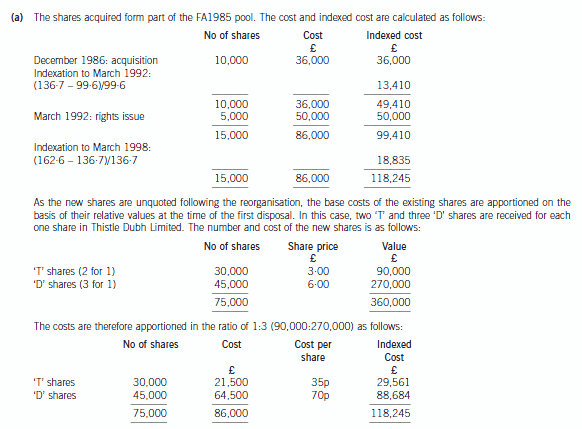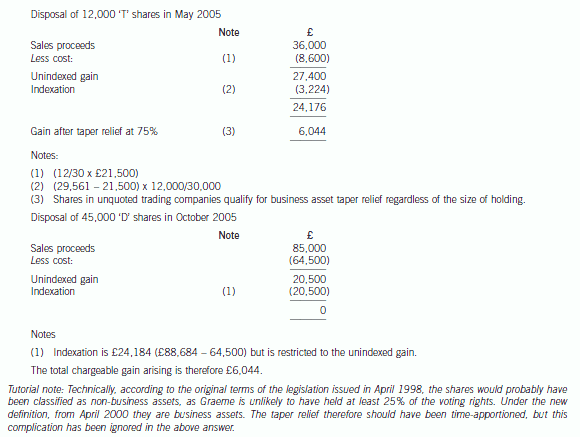ACCA证书含金量到底有多高?
发布时间:2019-07-20
2019年ACCA上半年考试已经结束,下半年考试正式计进入备考期,很多小伙在刚经历完上班年的考的,马上又要进入下半年新一轮的备考,这中间的疲惫相信很多正在备考或者已经考过的人都感同身受,很多考生会在这个阶段质疑说ACCA含金量真的有这么高吗?ACCA证书对求职就业、出国留学、未来发展有什么帮助吗?大这样努力考取这个证书真的是否有意义了?为此小编特地整理了如下内容。
一、ACCA的含金量
ACCA在通关部分科目后,可以申请英国OBU的学士学位和UOL的硕士学位,可以为自己的简历镀金,如果有想要出国留学或者工作都是有一定帮助的,获得学位后,还可以直接申请英联邦国家的硕博研究生。
ACCA在全球有180多个国家认可,被称为国际财会界的"通行证"。现拥有7,200家认可雇主,在中国有近千家签约就业企业,主要为四大会计师事务所、跨国银行、世界500强企业和国际国内大型知名企业。
据ACCA年度薪资调查报告显示,应届生通关ACCA后最低年薪基本不会低于15万。ACCA会员年薪达到30万至50万人民币之间比例高达52%,ACCA会员收入在50万至100万人民币之间比例高达21%,受访会员最高年薪超过200万人民币。
二、ACCA考试优势
ACCA考试周期短:
报名时间分为4个考季,3/6/9/12月,一年可以考4次。
ACCA报考条件低:
1、门槛不高,报考并无专业限制
2、大专学历即可报名
3、在校期间即可参加考试,毕业就拿证
4、无财会背景人士通过学习均可以通过
无论你是财会专业还是非财会专业,如果你想在财会行业有好的发展前景,就去考一个能够带你达到高起点、高薪资,真正有用的“万能通行证”。
三、ACCA就业前景
那考下ACCA之后,能去哪些企业~
1.四大会计师事务所
这个毫无疑问,ACCA这张素有“四大通行证”之称的证书,可谓是通往财会行业权威——四大的绝对加分项。但是,ACCAer可不止四大这一个选择哦~
2.国内会计师事务所
虽然,国际四大一直是财会人心中的圣地,但是近几年来,国内事务所的发展迅猛,收入和排名也随之发生了翻天覆地的变化。今年,身为本土八大的致同挤进前四!拿下ACCA,八大的面试官也会对你青睐有加。
3.投资银行
除了高盛、摩根大通、汇丰这些在国际上赫赫有名的国际银行外,国内的四大银行,也能给ACCA持证人们提供一个很好的施展平台。
4.金融机构
都说,金融、财会不分家,在ACCA的学习大军中,也不乏在金融领域打拼多年的从业者。因为金融工作中涉及到的财务报表、IPO估值等都需要用到财会的内容,所以ACCA可以说是对口证书。
5.500强外企
毫无疑问,ACCA这张起源于英国,适用国际会计准则的高端证书,绝对可以称得上是通往外企的“黄金文凭”。
综合以上就是对于上述ACCA问题的解答了,希望对于各位小伙伴有帮助,小编将持续更新相关内容。
下面小编为大家准备了 ACCA考试 的相关考题,供大家学习参考。
(b) Discuss the view that fair value is a more relevant measure to use in corporate reporting than historical cost.
(12 marks)
(b) The main disagreement over a shift to fair value measurement is the debate over relevance versus reliability. It is argued that
historical cost financial statements are not relevant because they do not provide information about current exchange values
for the entity’s assets which to some extent determine the value of the shares of the entity. However, the information provided
by fair values may be unreliable because it may not be based on arm’s-length transactions. Proponents of fair value
accounting argue that this measurement is more relevant to decision makers even if it is less reliable and would produce
balance sheets that are more representative of a company’s value. However it can be argued that relevant information that is
unreliable is of no use to an investor. One advantage of historical cost financial information is that it produces earnings
numbers that are not based on appraisals or other valuation techniques. Therefore, the income statement is less likely to be
subject to manipulation by management. In addition, historical cost balance sheet figures comprise actual purchase prices,
not estimates of current values that can be altered to improve various financial ratios. Because historical cost statements rely
less on estimates and more on ‘hard’ numbers, it can be said that historical cost financial statements are more reliable than
fair value financial statements. Furthermore, fair value measurements may be less reliable than historical costs measures
because fair value accounting provides management with the opportunity to manipulate the reported profit for the period.
Developing reliable methods of measuring fair value so that investors trust the information reported in financial statements is
critical.
Fair value measurement could be said to be more relevant than historical cost as it is based on market values and not entity
specific measurement on initial recognition, so long as fair values can be reliably measured. Generally the fair value of the
consideration given or received (effectively historical cost) also represents the fair value of the item at the date of initial
recognition. However there are many cases where significant differences between historical cost and fair value can arise on
initial recognition.
Historical cost does not purport to measure the value received. It cannot be assumed that the price paid can be recovered in
the market place. Hence the need for some additional measure of recoverable value and impairment testing of assets.
Historical cost can be an entity specific measurement. The recorded historical cost can be lower or higher than its fair value.
For example the valuation of inventory is determined by the costing method adopted by the entity and this can vary from
entity to entity. Historical cost often requires the allocation of costs to an asset or liability. These costs are attributed to assets,
liabilities and expenses, and are often allocated arbitrarily. An example of this is self constructed assets. Rules set out in
accounting standards help produce some consistency of historical cost measurements but such rules cannot improve
representational faithfulness.
Another problem with historical cost arises as regards costs incurred prior to an asset being recognised. Historical costs
recorded from development expenditure cannot be capitalised if they are incurred prior to the asset meeting the recognition
criteria in IAS38 ‘Intangible Assets’. Thus the historical cost amount does not represent the fair value of the consideration
given to create the asset.
The relevance of historical cost has traditionally been based on a cost/revenue matching principle. The objective has been to
expense the cost of the asset when the revenue to which the asset has contributed is recognised. If the historical cost of the
asset differs from its fair value on initial recognition then the matching process in future periods becomes arbitrary. The
measurement of assets at fair value will enhance the matching objective. Historical cost may have use in predicting future
net reported income but does not have any necessary implications for future cash flows. Fair value does embody the market’s
expectations for those future cash flows.
However, historical cost is grounded in actual transaction amounts and has existed for many years to the extent that it is
supported by practical experience and familiarity. Historical cost is accepted as a reliable measure especially where no other
relevant measurement basis can be applied.
(b) Comment on the need for ethical guidance for accountants on money laundering. (4 marks)
(b) Need for ethical guidance
■ Accountants (firms and individuals) working in a country that criminalises money laundering are required to comply with
anti-money laundering legislation and failure to do so can lead to severe penalties. Guidance is needed because:
– legal requirements are onerous;
– money laundering is widely defined; and
– accountants may otherwise be used, unwittingly, to launder criminal funds.
■ Accountants need ethical guidance on matters where there is conflict between legal responsibilities and professional
responsibilities. In particular, professional accountants are bound by a duty of confidentiality to their clients. Guidance
is needed to explain:
– how statutory provisions give protection against criminal action for members in respect of their confidentiality
requirements;
– when client confidentiality over-ride provisions are available.
■ Further guidance is needed to explain the interaction between accountants’ responsibilities to report money laundering
offences and other reporting responsibilities, for example:
– reporting to regulators;
– auditor’s reports on financial statements (ISA 700);
– reports to those charged with governance (ISA 260);
– reporting misconduct by members of the same body.
■ Professional accountants are required to communicate with each other when there is a change in professional
appointment (i.e. ‘professional etiquette’). Additional ethical guidance is needed on how to respond to a ‘clearance’ letter
where a report of suspicion has been made (or is being contemplated) in respect of the client in question.
Tutorial note: Although the term ‘professional clearance’ is widely used, remember that there is no ‘clearance’ that the
incumbent accountant can give or withhold.
■ Ethical guidance is needed to make accountants working in countries that do not criminalise money laundering aware
of how anti-money laundering legislation may nevertheless affect them. Such accountants may commit an offence if,
for example, they conduct limited assignments or have meetings in a country having anti-money laundering legislation
(e.g. UK, Ireland, Singapore, Australia and the United States).
(b) During the inventory count on 31 December, some goods which had cost $80,000 were found to be damaged.
In February 2005 the damaged goods were sold for $85,000 by an agent who received a 10% commission out
of the sale proceeds. (2 marks)
Required:
Advise the directors on the correct treatment of these matters, stating the relevant accounting standard which
justifies your answer in each case.
NOTE: The mark allocation is shown against each of the three matters.
(b) The inventories should be valued at the lower of cost and net realisable value. Cost is $80,000, net realisable value is
$85,000 less 10%, or $76,500. The net realisable value of $76,500 should therefore be taken (IAS2 Inventories)
2 Graeme, aged 57, is married to Catherine, aged 58. They work as medical consultants, and both are higher rate
taxpayers. Barry, their son, is aged 32. Graeme, Catherine and Barry are all UK resident, ordinarily resident and
domiciled. Graeme has come to you for some tax advice.
Graeme has invested in shares for some time, in particular shares in Thistle Dubh Limited. He informs you of the
following transactions in Thistle Dubh Limited shares:
(i) In December 1986, on the death of his grandmother, he inherited 10,000 £1 ordinary shares in Thistle Dubh
Limited, an unquoted UK trading company providing food supplies for sporting events. The probate value of the
shares was 360p per share.
(ii) In March 1992, he took up a rights issue, buying one share for every two held. The price paid for the rights
shares was £10 per share.
(iii) In October 1999, the company underwent a reorganisation, and the ordinary shares were split into two new
classes of ordinary share – ‘T’ shares and ‘D’ shares, each with differing rights. Graeme received two ‘T’ and three
‘D’ shares for each original Thistle Dubh Limited share held. The market values for the ‘T’ shares and the ‘D’
shares on the date of reorganisation were 135p and 405p per share respectively.
(iv) On 1 May 2005, Graeme sold 12,000 ‘T’ shares. The market values for the ‘T’ shares and the ‘D’ shares on that
day were 300p and 600p per share respectively.
(v) In October 2005, Graeme sold all of his ‘D’ shares for £85,000.
(vi) The current market value of ‘T’ shares is 384p per share. The shares remain unquoted.
Graeme and Catherine have owned a holiday cottage in a remote part of the UK for many years. In recent years, they
have used the property infrequently, as they have taken their holidays abroad and the cottage has been let out as
furnished holiday accommodation.
Graeme and Catherine are now considering selling the UK country cottage and purchasing a holiday villa abroad.
Initially they plan to let this villa out on a furnished basis, but following their anticipated retirement, would expect to
occupy the property for a significant part of the year themselves, possibly moving to live in the villa permanently.
Required:
(a) Calculate the total chargeable gains arising on Graeme’s disposals of ‘T’ and ‘D’ ordinary shares in May and
October 2005 respectively. (7 marks)


声明:本文内容由互联网用户自发贡献自行上传,本网站不拥有所有权,未作人工编辑处理,也不承担相关法律责任。如果您发现有涉嫌版权的内容,欢迎发送邮件至:contact@51tk.com 进行举报,并提供相关证据,工作人员会在5个工作日内联系你,一经查实,本站将立刻删除涉嫌侵权内容。
- 2020-01-08
- 2019-07-20
- 2020-01-08
- 2020-01-08
- 2020-01-08
- 2019-07-20
- 2019-07-20
- 2020-01-08
- 2021-05-23
- 2019-07-20
- 2020-03-08
- 2020-01-08
- 2020-01-08
- 2019-07-20
- 2020-02-29
- 2019-07-20
- 2020-09-04
- 2020-01-08
- 2019-07-20
- 2020-09-04
- 2019-07-20
- 2020-01-08
- 2020-01-08
- 2020-01-08
- 2019-07-20
- 2020-01-08
- 2020-02-29
- 2019-07-20
- 2020-01-08
- 2019-07-20